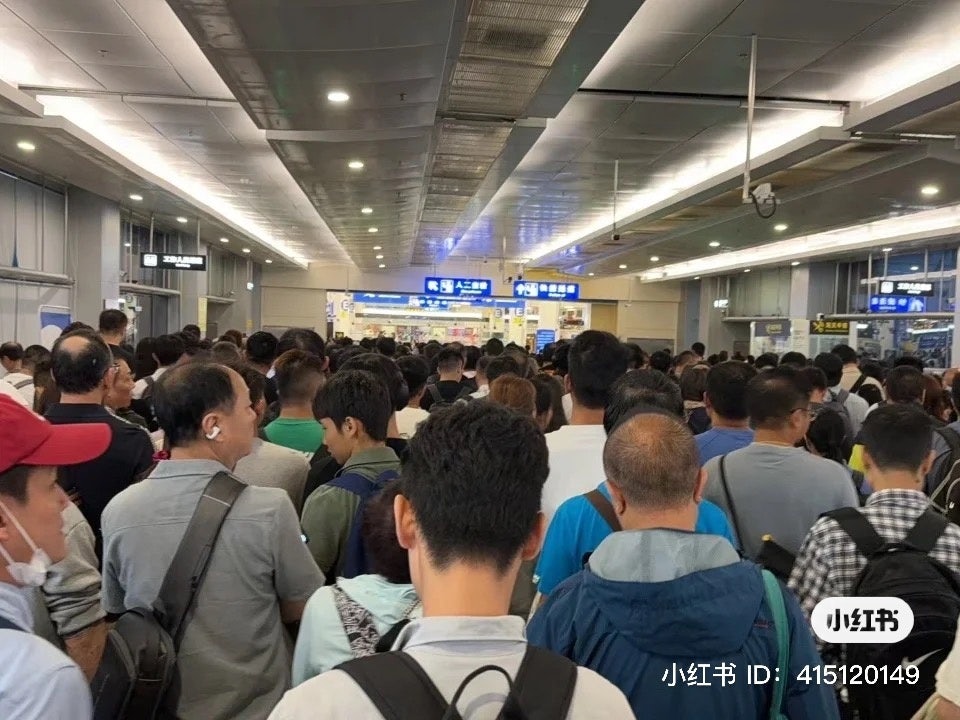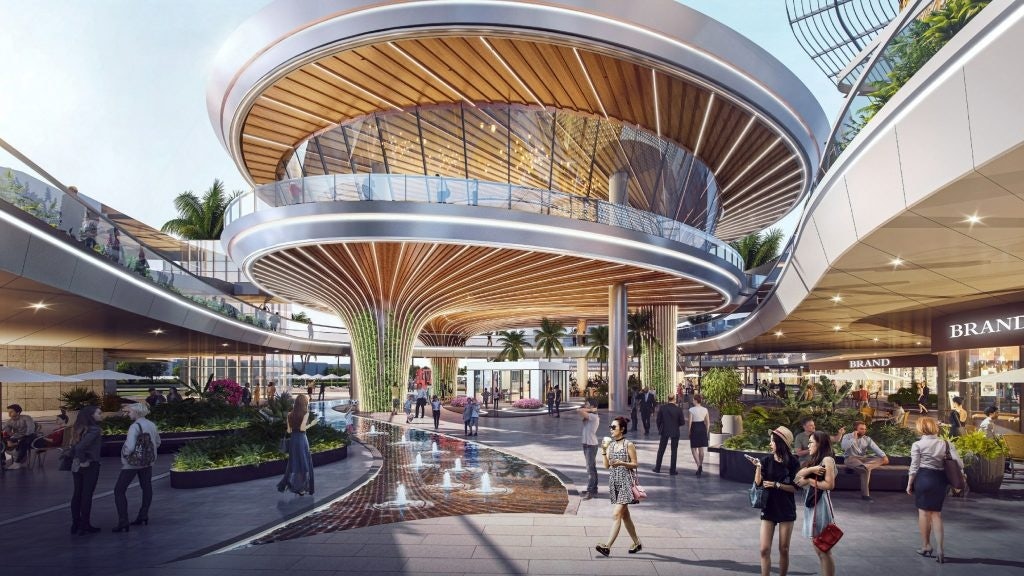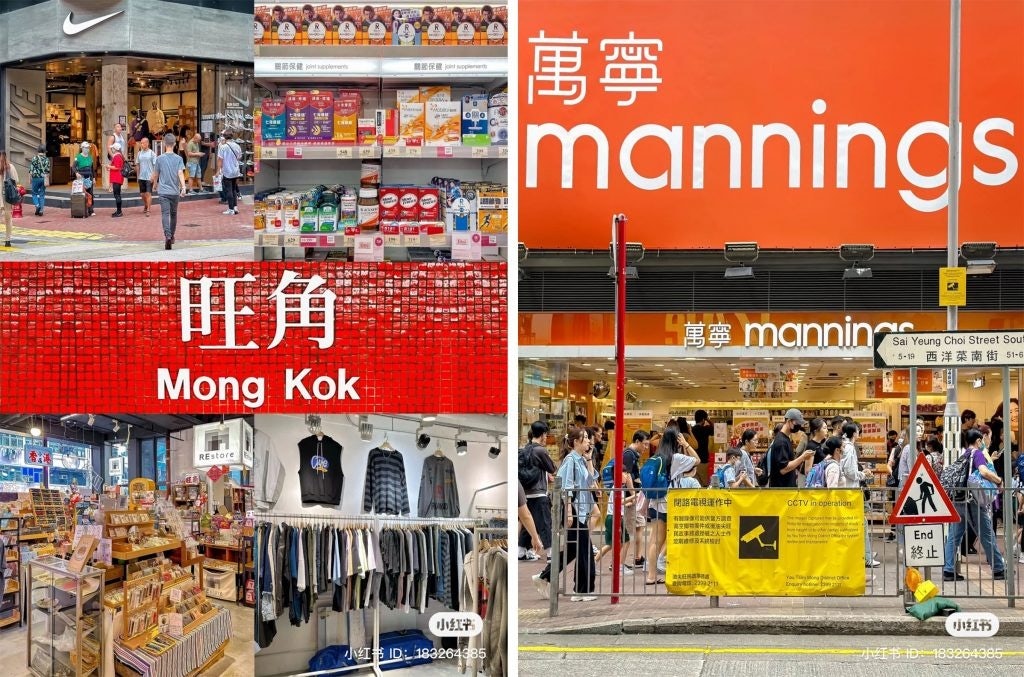Hundreds of thousands of Hongkongers traveled across the border to mainland China last weekend ahead of the Double Ninth Festival, which this year fell on October 23.
Since mainland China reopened its borders in January this year, more Hongkongers are spending their holidays or weekends in nearby mainland cities like Shenzhen. The main pull for them is cheaper goods and services, as well as a wider array of dining options. Convenient transportation options make these getaways easy.
However, the number of visitors to Hong Kong from the mainland pales in comparison.
“Many Hongkongers are heading to mainland China to ‘play,’” wrote Xiaohongshu user Hong Kong Diary. “Compared with Hong Kong, prices in the mainland are cheaper, and the food is delicious … It’s been difficult to buy high-speed rail tickets less than a week in advance.”
Fading appeal?#
On October 21, customs authorities registered 425,500 visitors traveling from Hong Kong to the mainland and Macau — surpassing previous records set during the Mid-Autumn Festival and National Day holidays.
And on October 23, 576,000 Hong Kong residents out of a total of 664,000 inbound passengers returned to the Special Administrative Region (SAR), as reported by the Immigration Department. Travelers endured hours of queueing at Hong Kong’s nine border checkpoints with the mainland.

Some 107,000 mainland Chinese visitors entered Hong Kong for the festival — which was a public holiday in Hong Kong but not the mainland, nearly four times fewer than the number of Hong Kong residents journeying to mainland China.
Since the pandemic, mainland tourists have increasingly traveled within the country. And now that international travel has resumed, many are flocking to short-haul overseas destinations, such as Thailand, South Korea, and Malaysia.
Hong Kong’s waning popularity is due to a host of factors, including the two years of Covid-19 barriers between mainland China and the SAR, as well as the pro-democracy protests that rocked the city in 2019 and 2020, which stoked social and political tensions between Hong Kong and the mainland.
“We see destination shoppers from mainland China less than we used to,” says Harvey Thompson, managing director of Eaton Workshop at Eaton Hotel in Hong Kong.
Still, he notes that the influence of Xiaohongshu has been significant. “Mainland visitors want to capture photographic memories rather than take home expensive keepsakes … These days, they are more interested in experiences like taking in an exhibition or seeking out a well-publicized local coffee shop or dai pai dong (food stall).”
The rise of other meccas#
Meanwhile, with greater local competition in the form of Hainan’s status as a duty-free shopping and resort destination, as well as the rise of other duty-free zones such as in Shanghai, Guangdong, and Guangzhou, Hong Kong’s reputation as a shopping mecca is under threat.
Despite officials insisting that Hainan and Hong Kong will collaborate rather than compete, the former is an appealing domestic option for mainland shoppers wishing to purchase luxury, fashion, and beauty products without incurring customs duties.
Empowered by Beijing’s efforts to develop Hainan as a free trade zone, the island recorded 5.46 billion (34.94 billion RMB) in duty-free sales in the first three quarters of this year. With its convenient transportation and established online duty-free services, Hainan is poised to further weaken Hong Kong’s reputation as a luxury shopping destination.

However, some analysts point to Hong Kong’s enduring status as a financial powerhouse. The city’s GDP was 363.4 billion in 2022, compared to Hainan’s 99.1 billion. And thanks to the continuing pull of Canto-pop music and Hong Kong cinema, the SAR still holds a special cultural appeal for many consumers.
“The busiest and best place to visit in Hong Kong is Mong Kok!” wrote Hong Kong and Shanghai-based blogger Xxling on Xiaohongshu in late October. “There are so many local treasures in Mong Kok … The area is not only easy to shop in, but you can also find a lot of great food.”

In Hong Kong, the blogger visited seafood restaurants and pharmacies such as Mannings, and shopped for sportswear brands in the district’s famous “Sneaker Street.”
Many of Xxling’s followers agree on Hong Kong’s continuing appeal as a destination, for now.
“All the places you mentioned are must-visits when traveling to Hong Kong!” wrote one commenter.

